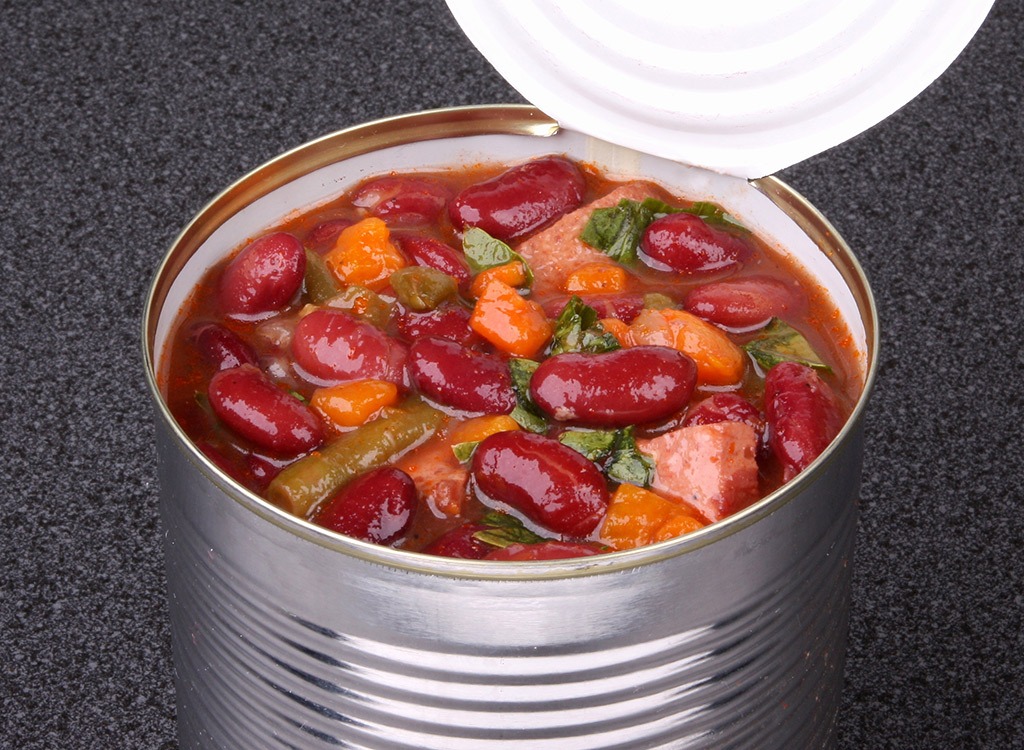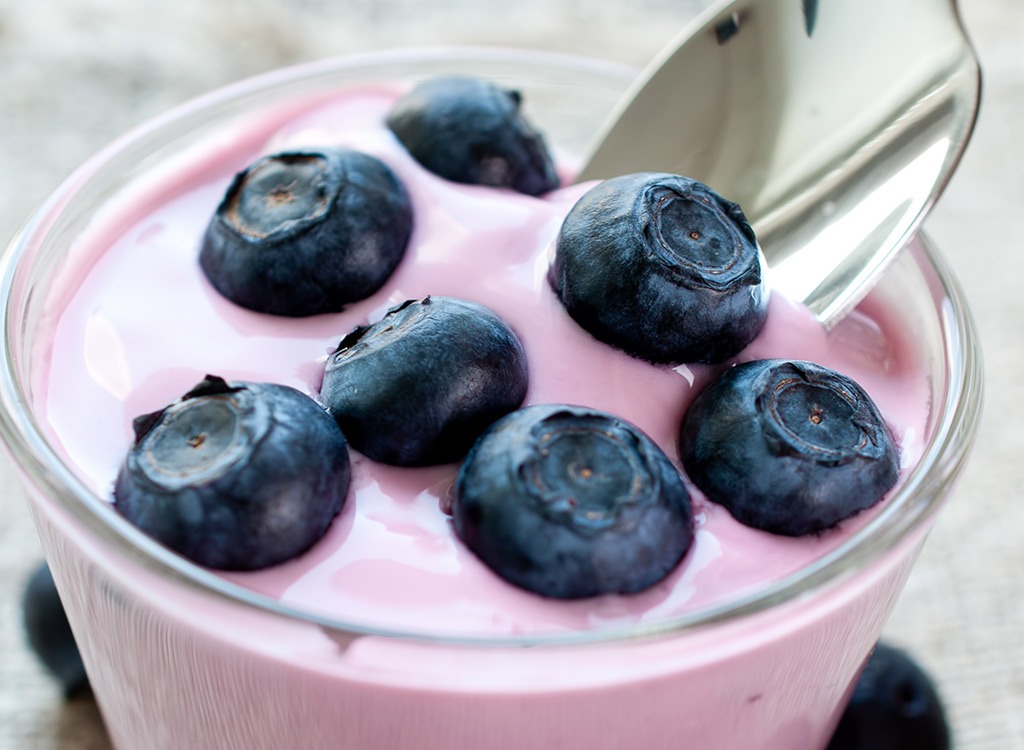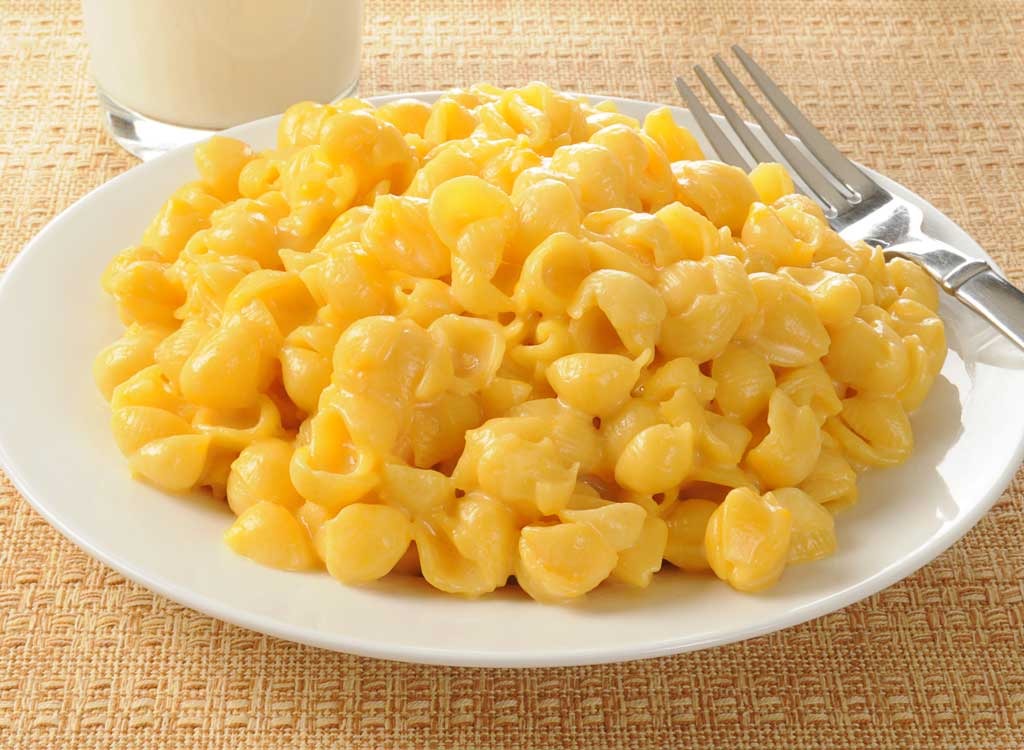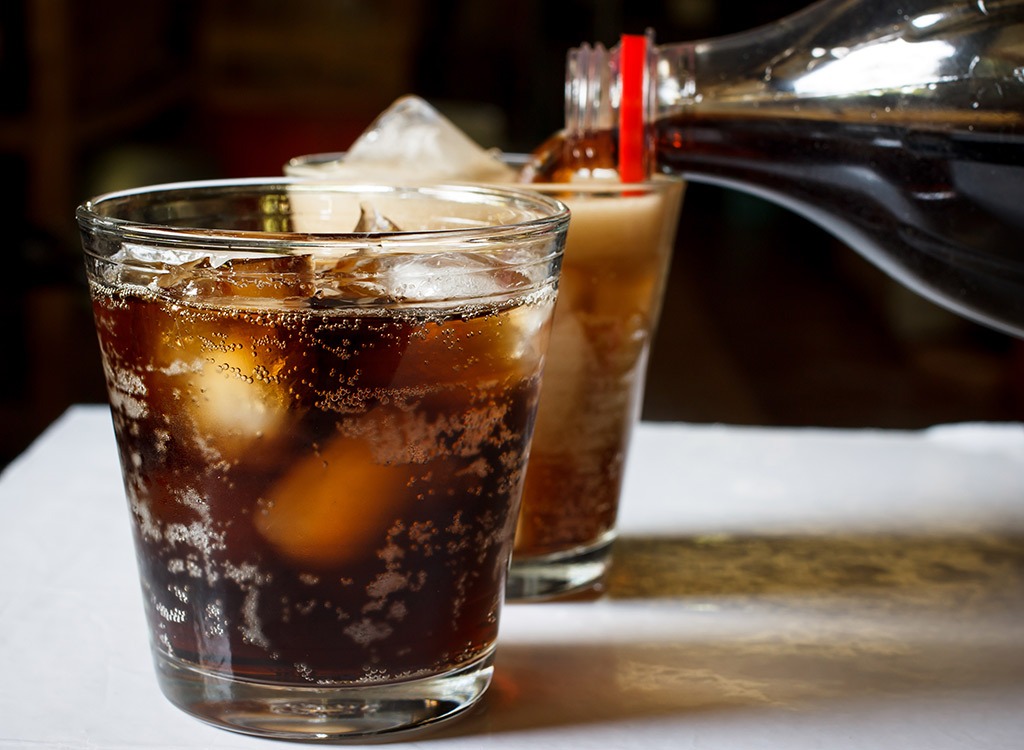
The Incredible Hulk. The Frankenstein monster. Major League Baseball. Don't we have enough evidence already that when scientists fool around with chemicals and the body, things can go really, really wrong? Sure, innovations like antibiotics and that stuff you rub between your toes to stop the itching are pretty great additions to modern life. But when it comes to our food supply, we'd prefer scientists leave well enough alone and put a little more trust in Mother Nature.
See, once upon a time, our food was created by cooks. Some of those cooks were highly paid fancy-pants types, but most of them were modest moms and grandmothers who combined naturally grown grains and bits of meat and vegetables and spices and turned them into everything from spaghetti and meatballs to pad Thai. They took what nature handed them and made something miraculous from it.
But today, it's not cooks who are creating our packaged and fast foods anymore—it's teams of scientists. And as they continue to discover emulsifiers to make ice cream taste smoother or strange dyes that make Greek yogurt more vibrantly colored, we get further and further away from real food—at least as our ancestors would recognize it. In fact, these days, it takes a degree in chemistry to fully understand what we're putting into our bodies—and yes, we keep a science wiz on staff to decode all the jibber jabber!
While you already know that natural foods are always better than additive-spiked ones, some chemicals are far worse than others. Some cause hyperactivity and weight gain, while other have been linked to cancer and heart disease. Read on the discover the worst additives and unpronounceable chemicals overrunning our food supply and do your best to keep them away from your fork and knife. And after you've become familiar with their harmful effects, be sure to kick these 150 Worst Packaged Foods in America out of your diet. Most of them are chock full of the items on this list.
Sodium Nitrite & Sodium Nitrate

What They Are: Preservatives used to prevent bacterial growth and maintain the pinkish color of meats and fish.
Found In: Some bacon, sausage, hot dogs, and cured, canned, and packaged meats
What You Need to Know: Under certain conditions (like high heat), sodium nitrite and nitrate react with amino acids to form cancer-causing chemicals called nitrosamines. This reaction can be hindered by the addition of ascorbic acid, erythorbic acid, or alpha-tocopherol.
Partially Hydrogenated Vegetable Oil

What It Is: A manufactured fat created by forcing hydrogen gas into vegetable fats under extremely high pressure, an unintended effect of which is the creation of trans fatty acids. Food processors like this fat because of its low cost and long shelf life.
Found In: A large portion of margarines, pastries, frozen foods, cakes, cookies, crackers, soups, fast food items and nondairy creamers
What You Need to Know: Though trans fat has been shown to contribute to heart disease more so than saturated fat (it's in a number of these 30 Worst Foods For Your Heart), its artery-clogging effects extend beyond your heart. Reduced blood flow can impact everything from brain function to sexual function. While most health organizations recommend keeping trans fat consumption as low as possible, a loophole in the FDA's labeling requirements allows processors to add as much as 0.49 gram per serving and still claim zero in their nutrition facts. Sneaky!
There is some good news, though. The Food and Drug Administration (FDA) finally banned partially hydrogenated oils from packaged food products. Unfortunately, that doesn't mean you'll never see a trans fat ever again. Restaurants can still use artificial trans fats in their food as of now, but the World Health Organization has a plan to eliminate these fats from the global food supply.
Fully Hydrogenated Vegetable Oil

What It Is: Extremely hard, waxlike fat made by forcing as much hydrogen as possible onto the carbon backbone of fat molecules. To obtain a manageable consistency, food manufacturers often blend the hard fat with non-hydrogenated liquid fats.
Found In: A number of baked goods, peanut butters, and tub margarines
What You Need to Know: In theory, fully hydrogenated oils, as opposed to partially hydrogenated oils, should contain zero trans fat. But the process of hydrogenation isn't completely perfect, which means that trans fat will inevitably occur in small amounts.
Yellow #5 & Yellow #6

What They Are: The second and third most common food colorings, respectively.
Found In: Cereal, pudding, bread mix, beverages, chips, cookies, and condiments
What You Need to Know: Several studies have linked both dyes to learning and concentration disorders like ADD in children. In fact, Norway and Sweden have already banned the use of these artificial colors, and in the rest of the EU, foods containing these additives must be labeled with the phrase: "May have an adverse effect on activity and attention in children." Yellow #5 is also known to cause allergic-type reactions like hives in a small portion of the population. There are also piles of animal studies demonstrating potential risks such as kidney and intestinal tumors. Even with all these documents at their fingertips, the FDA does not view these as serious risks to humans. We see no reason to take a risk—there's not a pudding or condiment in the world that's worth it.
BHA & BHT

What They Are: Butylated hydroxytoluene and butylated hydroxyanisole are petroleum-derived antioxidants used to preserve fats and oils.
Found In: Beer, crackers, cereals, butter, and foods with added fats
What You Need to Know: Of the two, BHA is considered more dangerous. Studies have shown it to cause cancer in the forestomachs of rats, mice, and hamsters. The Department of Health and Human Services classifies the preservative as "reasonably anticipated to be a human carcinogen." And speaking of questionable product ingredients, check out these 40 Most Horrifying Things Found in Food.
Blue #1 & Blue #2

What They Are: Synthetic dyes that can be used alone or combined with other dyes to make different colors.
Found In: Most conventionally-produced blue, purple, and green foods such as beverages, cereals, candy, and icing
What You Need to Know: Both dyes have been loosely linked to cancers in animal studies, and the Center for Science in the Public Interest recommends avoiding them—and we agree. If you typically reach for a colorful cereal in the morning, why not replace it with one of these 50 Best Breakfast Foods for Weight Loss? They're all free of scary colorings and additives.
Sodium Phosphate

What It Is: Sodium phosphate is an additive made of sodium and phosphate that's used to keep meats moist and tender during storage.
Found In: A fair share of sausages, lunch and other processed meats, hams and canned fish
What You Need to Know: Even though phosphates are necessary in our diets, excess phosphate—especially the inorganic phosphate that is added to food—is more easily absorbed by the body. When high levels of phosphatase seep into the blood it can increase the risk for heart disease. Doctors are linking the compound to higher rates of chronic kidney disease, weak bones, and premature death.
Interesterified Fat

What It Is: Developed in response to demand for trans fat alternatives, this semi-soft fat is created by chemically blending fully hydrogenated and nonhydrogenated oils.
Found In: Pastries, margarine, frozen dinners, and canned soups
What You Need to Know: Testing on these fats has not been extensive, but the early evidence doesn't look promising. A study by Malaysian researchers showed a 4-week diet of 12 percent interesterified fats increased the ratio of LDL to HDL cholesterol, not a good thing. This study also showed an increase in blood glucose levels and a decrease in insulin response. A more recent 2014 Brazilian animal study found that the man-made fat can harden and narrow of the arteries, the two primary causes of heart attacks and strokes.
Corn Syrup

What It Is: A liquid sweetener and food thickener made by allowing enzymes to break corn starches into smaller sugars. USDA subsidies to the corn industry make it cheap and abundant, placing it among the most ubiquitous ingredients in grocery food products.
Found In: Every imaginable food category, including bread, soup, sauces, frozen dinners, and frozen treats
What You Need to Know: Corn syrup provides no nutritional value other than calories. In moderation, it poses no specific threat—other than an expanded waistline.
Evaporated Cane Juice

What It Is: A sweetener derived from sugar cane, the same plant used to make refined table sugar. It's also known as crystallized cane juice, cane juice, or cane sugar. Because it's subject to less processing than table sugar, evaporated cane juice retains slightly more nutrients from the grassy cane sugar.
Found in: Yogurt, soy milk, protein bars, granola, cereal, chicken sausages, and other natural or organic foods
What You Need to Know: Although pristine sugars are often used to replace ordinary sugars in "healthier" foods, the actual nutritional difference between the sugars is minuscule. So don't let those healthy-sounding label claims fool you into eating more than you normally would. If you don't consume it in moderation, evaporated cane juice can cause you to pack on weight and belly fat just like the white granular stuff.
Brominated Vegetable Oil

What It Is: A flame retardant used in rocket fuel that just so happens to also make a handy beverage emulsifier. When vegetable oil joins forces with bromine to create the chemical, it's really heavy. When added to drinks, it prevents flavoring from separating from the other ingredients and floating to the top of the bottle.
Found in: Citrus-flavored sodas and sports drinks
What You Need to Know: BVO may negatively affect thyroid hormones and contribute to internal inflammation, which has been linked to obesity, a condition that can make it harder to conceive. When ingested in excess bromine can cause headaches, fatigue, and a loss of memory and muscle coordination. To find out which sodas are laced with stuff, check out our exclusive report, 38 Top Diet Sodas—Ranked!
Monosodium Glutamate

What It Is: The salt of the amino acid glutamic acid, used to enhance the savory quality of foods. MSG alone has little flavor, and exactly how it enhances other foods is unknown.
Found In: Certain chilis, soups, chips and foods with chicken or beef flavoring
You Need to Know: Studies have shown that MSG injected into mice causes brain-cell damage, but the FDA believes these results are not typical for humans. The FDA receives dozens of reaction complaints each year for nausea, headaches, chest pains, and weakness. MSG has also been shown to make food taste more appetizing, which increases the desire to continue noshing. To make matters worse, it also blocks the "I'm full" hormone from communicating with the brain and tells your body to pump out insulin, the fat-storage hormone—not good news for those looking to melt their love handles.
Hydrolyzed Vegetable Protein

What It Is: A flavor enhancer created when heat and chemicals are used to break down vegetables— most often soy corn, or wheat —into their component amino acids. HVP allows food processors to achieve stronger flavors from fewer ingredients.
Found in: Canned soups and chili, frozen dinners, beef- and chicken-flavored products
What You Need to Know: One effect of hydrolyzing proteins is the creation of MSG. When MSG in food is the result of hydrolyzed protein, the FDA does not require it to be listed on the packaging. How sneaky is that!? And yes, that means the results on your body are the same as listed above for MSG.
High-Fructose Corn Syrup

What It Is: A cheap corn-derived sweetener representing more than 40 percent of all caloric sweeteners in the supermarket.
Found In: Nearly everything: ice cream, chips, cereal, bread, ketchup, canned fruits, yogurt, and two-thirds of all sweetened beverages
Wheat What You Need to Know: Since 1980, the US obesity rate has risen proportionately to the increase in HFCS, and Americans are now consuming at least 200 calories of the sweetener each day. Research published by The Endocrine Society found that adults who consumed high levels of high fructose corn syrup for just two weeks had increased levels of bad cholesterol, raising their risk of heart disease. In 2010, a Princeton University animal study found that consuming HFCS causes more weight gain and belly fat accumulation than a diet filled with equal amounts of sucrose (table sugar). On the flip side, however, a 2014 Nutrients report found HFCS-sweetened diets to have the same effects on obese study subjects as sucrose-sweetened diets. Not so surprisingly, though, the study was funded by the Corn Refiners Association, so the findings should be taken with a grain of salt. The bottom line: HFCS's role as nutritional enemy #1 has likely been exaggerated, but the reality is that we still don't know for sure how our bodies will react to decades of exposure to the sweetener. We suggest staying away from products containing the stuff when possible and limiting your overall sugar intake until we know more. Suffering from sweet tooth syndrome? Check out these 30 Easy Ways to Stop Eating So Much Sugar.
Modified Food Starch

What It Is: A catch-all term describing starches (derived from corn, wheat, potato, or rice) that are modified to change their response to heat or cold, improve their texture, and create efficient emulsifiers, among other reasons.
Found In: Most highly processed foods, low-calorie and diet foods, cookies, frozen meals
What You Need to Know: The starches themselves appear safe, but the nondisclosure of the chemicals used in processing causes some nutritionists to question their effects on health.
Red #3 & Red #40

What They Are: Food dyes that are cherry red and orange red, respectively. Red #40 is the most widely used food dye in America.
Found in: Fruit cocktail, candy, chocolate cake, cereal, beverages, pastries, maraschino cherries, and fruit snacks
What You Need to Know: The FDA has proposed a ban on Red #3 in the past, but so far the agency has been unsuccessful in implementing it. After the dye was inextricably linked to thyroid tumors in rat studies, the FDA managed to have the liquid form of the dye removed from external drugs and cosmetics.
Aspartame

What It Is: A near-zero-calorie artificial sweetener made by combining two amino acids with methanol. Most commonly used in diet soda, aspartame is 180 times sweeter than sugar.
Found in: More than 6,000 grocery items, including diet sodas, yogurts, and the tabletop sweeteners NutraSweet and Equal
What You Need to Know: Recently the Dietary Guidelines Advisory Committee gave the go-ahead to enjoy aspartame in moderation. However, over the past 30 years, the FDA has received thousands of consumer complaints due mostly to neurological symptoms such as headaches, dizziness, memory loss, and, in rare cases, epileptic seizures. Many studies have shown aspartame to be completely harmless while others indicate that the additive might be responsible for a range of cancers.
Caramel Coloring

What It Is: This additive made by treating sugar with ammonia, which can produce some nasty carcinogens.
Found in: Soft drinks, some snack and protein bars, candy, coffee flavor syrups, processed snacks, and baked goods
What You Need to Know: While it may sound benign, caramel coloring, the coloring most often used in sodas and candy, has been proven to cause cancer in animals. In 2011, the International Agency for Research on Cancer deemed the additive to be "possibly carcinogenic to humans."








